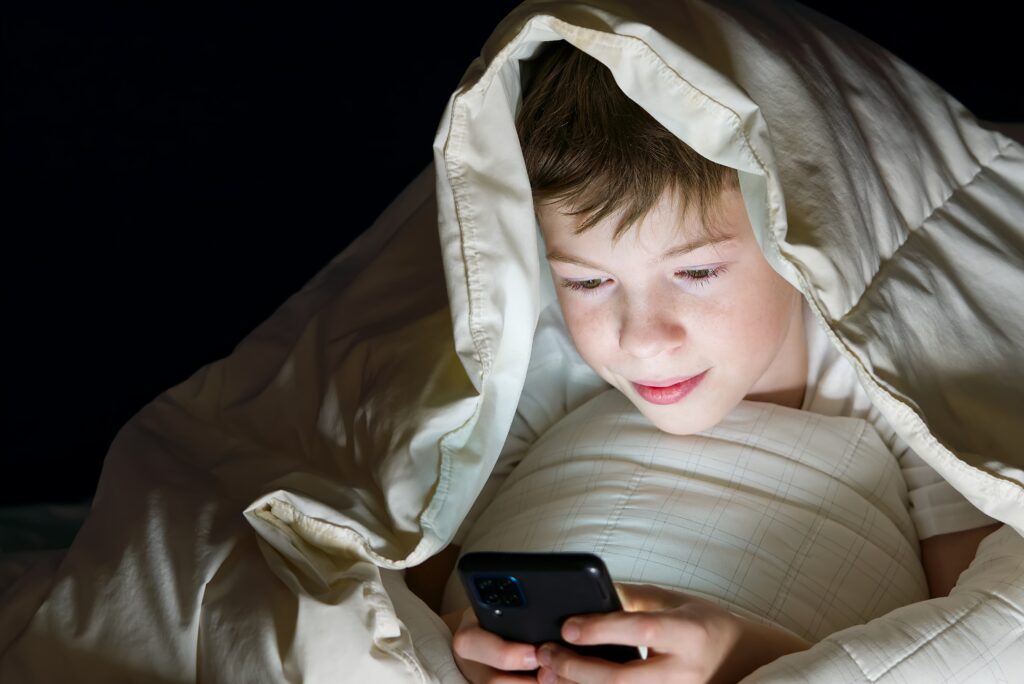📱💔 From Connection to Distraction: The Truth About Mobile Addiction
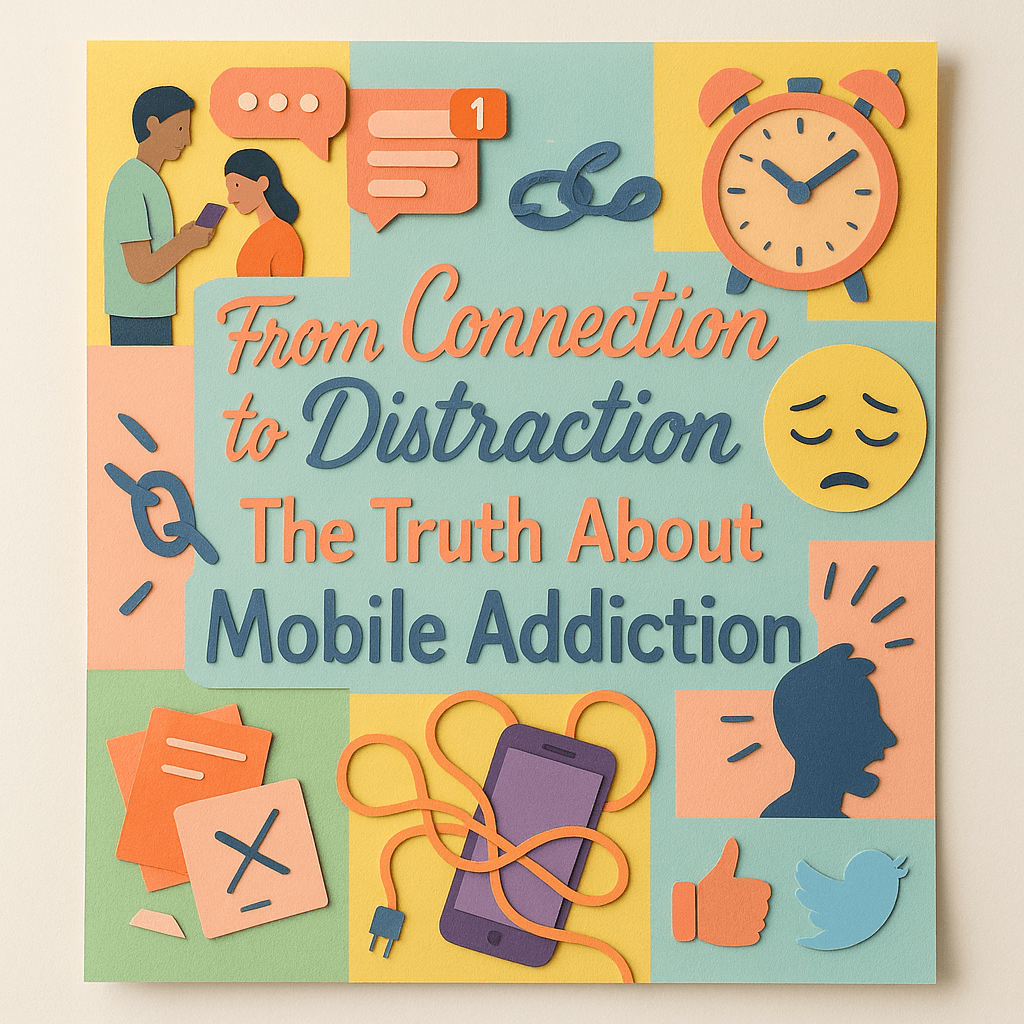
Smartphones are a big part of our lives. We use them to talk, learn, work, and pass time. But when we spend too much time on them and can’t stop, it becomes mobile phone addiction — a problem that affects people of all ages. It can harm your health, school, work, and relationships.
Life before smartphones was simple and warm. People started their mornings slowly with tea and conversations, not screens. Parents gave children toys, snacks, and hugs — not phones. Families laughed together, shared stories, and made real memories.
Today, we still gather, but everyone is lost in their phones. Real smiles are replaced by emojis. Real talks are replaced by silent scrolling. Even outdoor time is no different — parents take kids out but stay glued to their screens, missing the world around them.
People usually hide addictions like smoking, drinking, drugs, or tobacco to avoid upsetting their parents or elders. But mobile phone addiction is different — it happens out in the open. Ironically, the same elders who strictly warn against cigarettes and alcohol often encourage screen time, thinking it’s harmless or even helpful.
This shows how phone addiction has become socially accepted, even though it can harm our health, reduce happiness, and weaken our focus — just like any other form of digital addiction. The danger lies in how invisible it is. When society normalizes it, we stop noticing its serious effects — and that’s how we become smartphone zombies without even realizing it.
We’ve traded joy, connection, and peace for constant notifications and empty tapping. Real life is quietly slipping away behind glowing screens, turning many into smartphone zombies.
📚✨Read this article in Arabic (اقرأ هذا المقال باللغة العربية) 🇸🇦✨📚
The Day the Screens Took Over
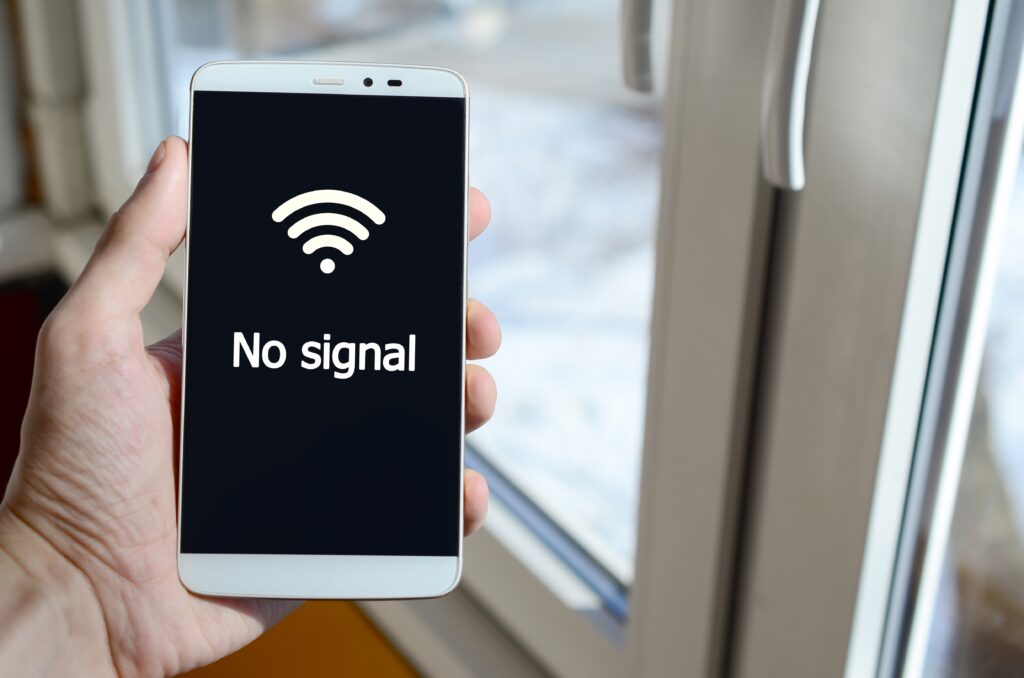
In a small town, everyone was glued to their screens—phones, tablets, laptops—you name it. People walked into poles, bumped into each other, and forgot how to make eye contact due to their growing smartphone addiction.
Then one day, something shocking happened: all the screens went black at the same time. No messages, no videos, no endless scrolling caused by digital addiction.
People panicked. Mrs. Smith swiped her phone frantically. Mr. Johnson tapped his tablet over and over. Kids cried because their games stopped.
But then, something amazing happened—people looked up. They saw each other’s faces for the first time in ages. They started talking, laughing, and even went outside to play—without screens!
When the screens finally came back on, the town made a promise: to look up more often and remember the real world beyond the glow of their devices, breaking free from mobile phone addiction.
In this article, I’ll explain what phone addiction effects are, why people get addicted to their phones, how mobile addiction affects different age groups, and share simple steps to regain balance and reconnect with real life.
What Is Mobile Addiction?
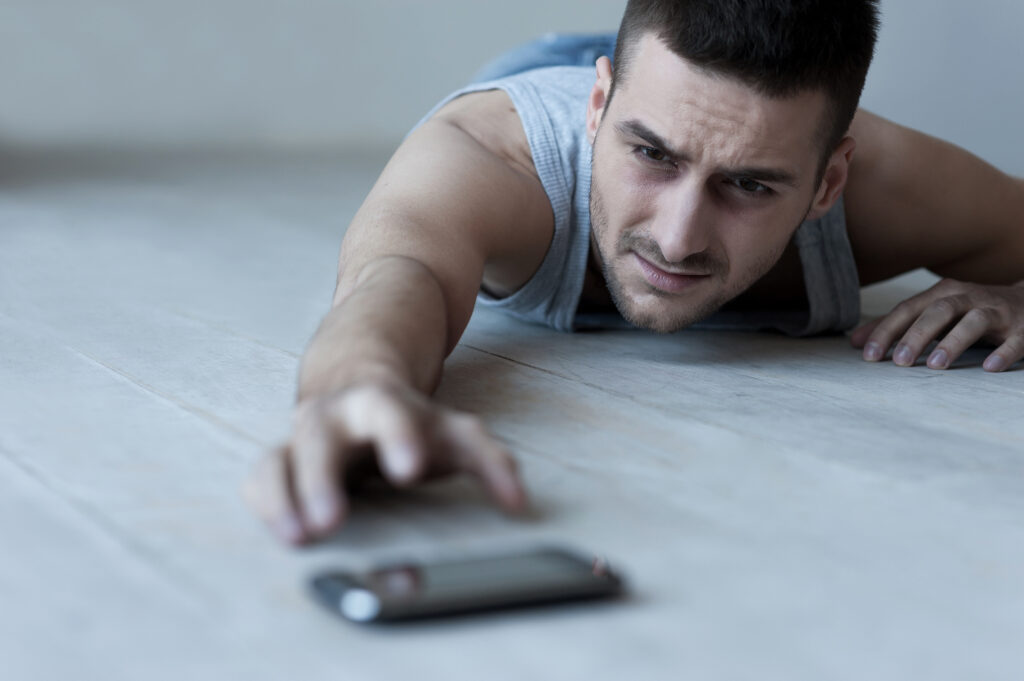
Mobile addiction means using your phone so much that it starts to cause problems in your life. You might feel anxious or upset when you don’t have your phone. You might keep checking it again and again even if there is nothing new. Mobile phone addiction is like any other habit that is hard to stop because it gives your brain a little “reward” every time you look at it. This constant urge and behavior are key signs of smartphone addiction and digital addiction.
If you’re ready to replace unhealthy screen time with a skill that can change your life, check out my guide — Learn SQL + Business Intelligence and Earn $90,000 a Year from Home: The Complete 2025 Guide — and start building a career that works for you, not against you.
📲 Why Do People Get Addicted to Mobile Phones?

Mobile phones are made to be helpful and fun to use. We use them every day to talk to friends and family, learn new things, work, and watch videos or play games. But sometimes, people find it hard to stop looking at their phones because they are very engaging and always with us, leading to smartphone addiction and mobile phone addiction.
Here are some simple reasons why mobile phones can become addictive:
• Smartphone access: Today, phones are cheaper and more available than ever before. Even young children can have their own phones. Because phones are easy to get, many people start using them a lot from a young age, increasing risks of digital addiction.
• COVID-19 impact: Since the pandemic began, many people started working and studying from home using their phones and other devices. This has made people spend even more time on their phones than before.
• Constant connectivity: Phones let us talk, chat, and share pictures or messages anytime and anywhere. This makes us feel like we always have to be available to others, contributing to phone addiction effects.
• Entertainment: Phones give us quick access to games, videos, music, and social media, so there is always something fun or interesting to do.
• Information: If we want to know something, like news or answers to questions, our phones give us information right away.
• Rewards: When someone likes or comments on our posts, it makes us feel happy. Our brain gets small bursts of a chemical called dopamine, which encourages us to check our phones more often.
• Fear of missing out (FOMO): Many people worry that if they don’t look at their phones, they might miss important news, messages, or fun updates.
• Habit and boredom: Sometimes, we pick up our phones just because we are bored. This habit can happen many times a day without us realizing it.
Because of all these reasons, mobile phones are more than just tools — they can become distractions that are hard to stop using. It’s important to be aware of this and try to use phones in a healthy way to avoid becoming a smartphone zombie.
📱 How Mobile Addiction Affects Different Age Groups
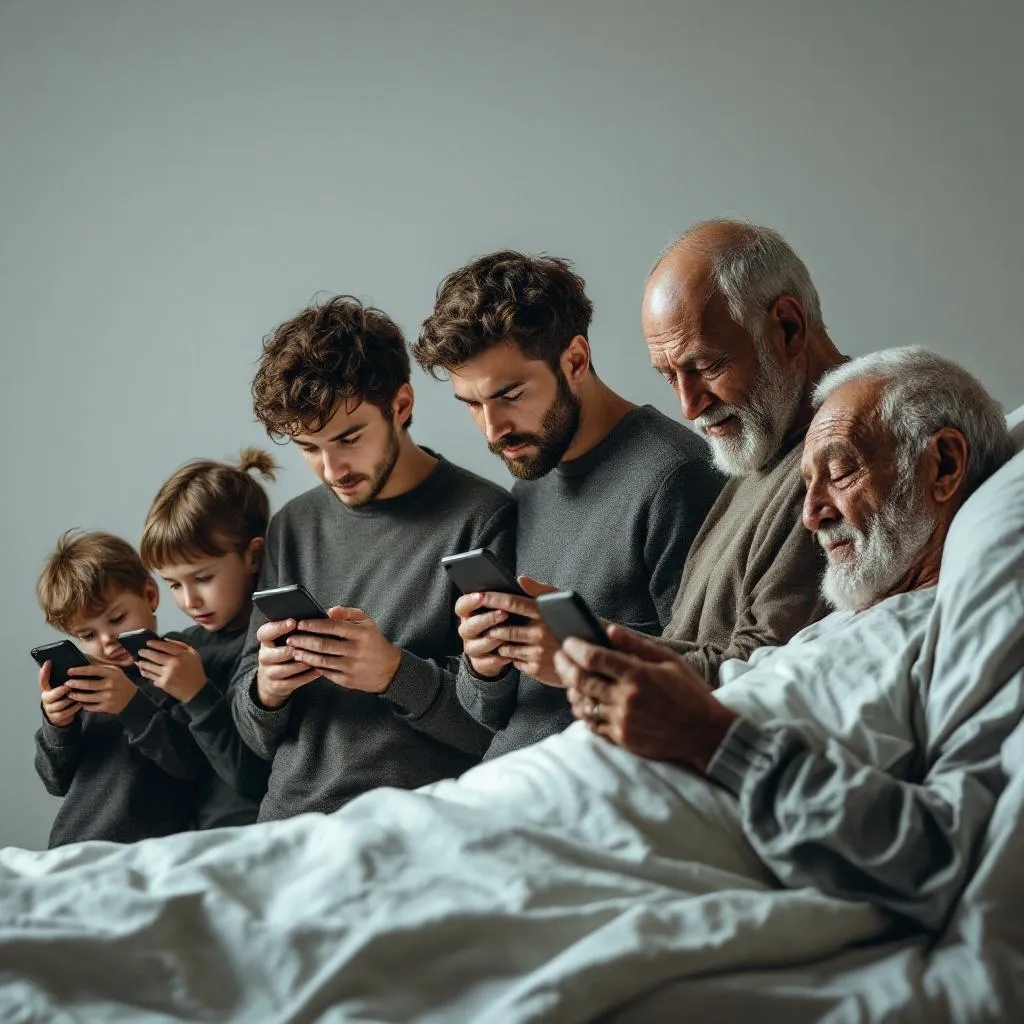
Mobile addiction affects people of all ages, but it doesn’t affect everyone in the same way. The impact often depends on how old you are, what your daily routine is, and how you use your phone. This is why smartphone addiction and mobile phone addiction can have different phone addiction effects on children, teens, adults, and seniors. Let’s take a look at how digital addiction affects different age groups in simple words`. .
1. Kids and Teenagers (Ages 6–18)
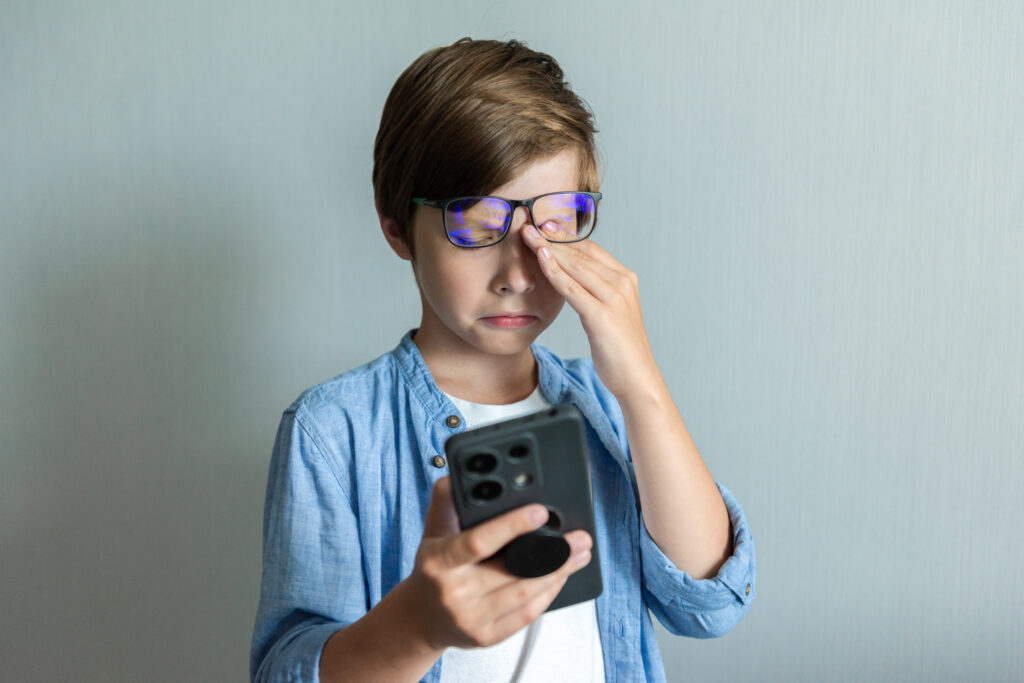
Children and teenagers enjoy using phones for games, videos, chatting, and fun apps, but spending too much time on screens can cause several problems that affect their health, learning, and daily routine. It can make them perform poorly in school, stop them from going outside to play, and even cause sleep issues if they use phones late at night. Too much phone use can also make it hard for them to talk confidently with people face-to-face. Another growing concern is that many kids are now wearing spectacles at an early age because of long-term use of mobile phones from a very close distance, which strains their eyes and harms their vision.
Excessive mobile phone addiction is also linked to mental health problems in teens, such as anxiety, depression, and low self-esteem. Constant comparison on social media, lack of real-life social interaction, and online bullying can deeply affect their emotional well-being and lead to feelings of loneliness or sadness.
According to a recent report by the World Health Organization, excessive screen time among teens is linked to increased mental health challenges worldwide.
Example: A 12-year-old student plays mobile games for several hours every evening, sleeps very late at night, feels tired in the morning, starts wearing glasses due to weak eyesight, and cannot focus during class. Over time, he also becomes anxious, loses interest in activities he once enjoyed, and feels isolated — all of which affect his health, school performance, and mental state, showing the serious phone addiction effects of smartphone addiction.
2. Young Adults (Ages 19–30)
Many young adults use their phones for work, study, entertainment, and social media, but when phone use becomes too frequent, it can lead to distraction, lower productivity, and even mental stress. This type of digital addiction may cause them to keep checking their phones during studies or work, find it hard to concentrate, and feel unhappy by comparing their lives to what they see on social media. It can also take away time from real-life activities and personal growth, which are important at this stage.
“It’s crucial to let young people choose their own career paths rather than forcing them into traditional roles like doctors or engineers.”
Example: A 22-year-old college student scrolls through social media and watches short videos between study breaks but ends up wasting hours and delaying assignments, which causes stress and poor academic results—clear signs of smartphone addiction in young adults.
3. Middle-Aged Adults (Ages 31–50)
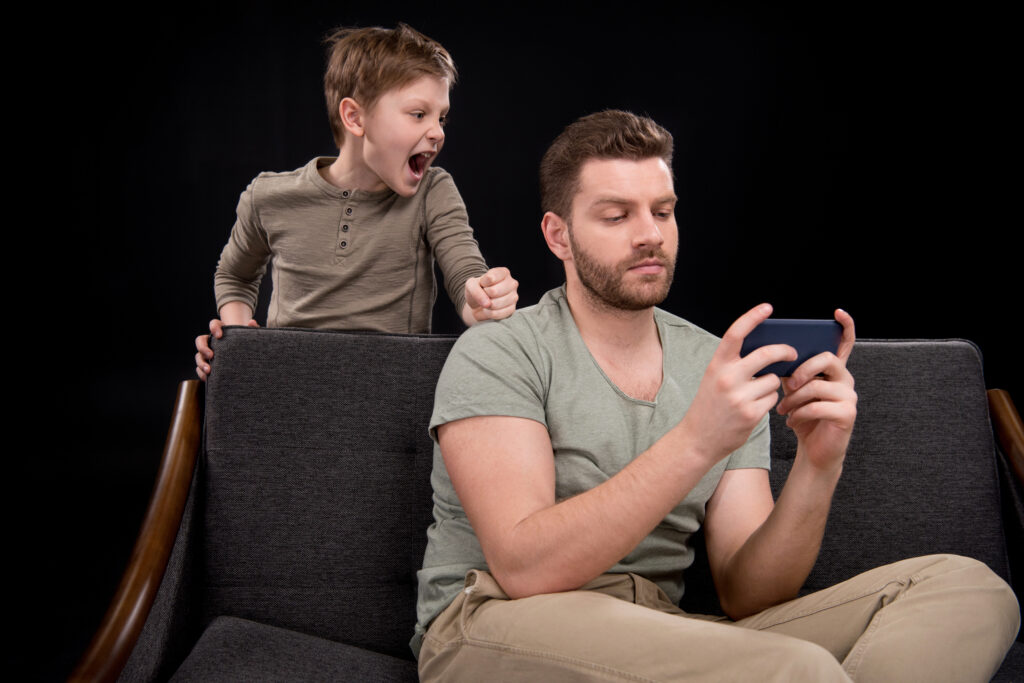
People in this age group often use phones to manage work, family, and daily responsibilities, but too much screen time can reduce the quality of their personal life and increase mental tiredness. This form of phone addiction may lead to digital addiction symptoms like irritability, sleep issues, and social disconnection. Constantly checking work messages, emails, or social media—even during family time—can make their loved ones feel ignored, and it can also lead to a poor work-life balance.
Example: A 32-year-old parent spends most evenings scrolling through social media or replying to work chats instead of talking to their children or spouse. This habit slowly creates distance in the family, as other members feel unimportant and disconnected — a common sign of growing mobile phone addiction in daily life.
4. Older Adults (Ages 51–70)
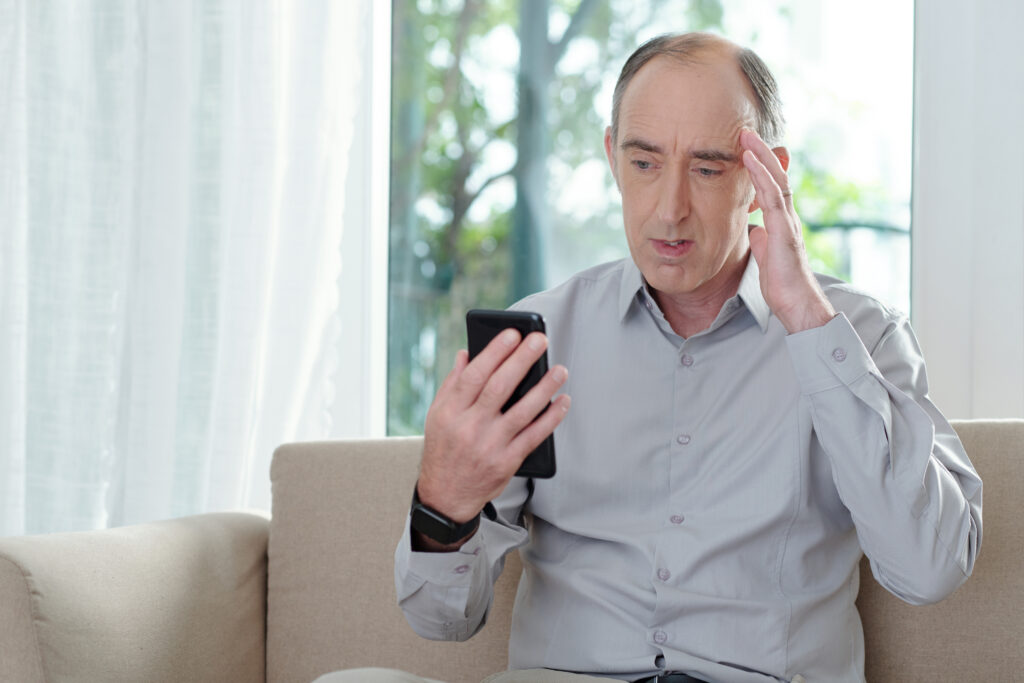
Older adults often use smartphones to stay connected with family, watch religious videos, read the news, or pass time. However, they can become overly dependent on their devices without realizing it. Too much screen time can lead to mobile addiction, causing them to withdraw from real-life interactions. They may stop meeting people in person, feel lonely, and sometimes become confused or stressed due to frequent app updates and technology overload.
Example: A 52-year-old man spends most of his day watching YouTube videos and rarely goes outside or meets his friends. Over time, this habit leads to digital isolation, reduced physical activity, and emotional loneliness — quietly affecting his quality of life.
5. Seniors (Ages 70+)

Seniors often use their phones to stay connected, feel less lonely, or simply to keep themselves busy, but excessive smartphone use can negatively affect both their mind and body. This type of mobile addiction may lead them to stop doing simple daily activities like walking or meeting neighbors. Over time, they may begin to feel bored, tired, or even sad without knowing the real reason. Long screen time can also strain their eyes, and cause neck or back pain due to poor posture.
Example: A 75-year-old man spends the whole day watching videos and forwarding messages on his phone. He no longer takes his evening walks or meets his old friends, which slowly reduces his happiness, energy, and overall mental health.
Signs That You or Someone You Know Might Be Addicted to Their Phone

Recognizing the signs of mobile addiction or smartphone addiction is the first step toward change. Some common symptoms of digital addiction include:
• You check your phone many times an hour, even if there are no new messages — a classic sign of smartphone addiction.
• You feel restless or upset when you can’t use your phone, showing emotional phone addiction effects.
• You lose track of time when using your phone and realize hours have passed — often called becoming a smartphone zombie.
• You ignore important work, school, or family because you are using your phone.
• You use your phone to avoid dealing with problems or uncomfortable feelings.
• You feel the need to check your phone first thing after waking up or before going to sleep — a strong sign of digital dependence.
• You get annoyed or distracted when someone asks you to put your phone away.
• You use your phone even when it is not safe, like while walking or crossing the street.
• You hide how much time you spend on your phone from friends or family.
• You feel anxious or bored if you don’t have your phone with you — one of the emotional signs of smartphone addiction.
How to Manage and Reduce Mobile Addiction

No matter how old you are, here are easy and practical tips to help you reduce smartphone addiction and use your phone in a healthier way:
1. Set Phone-Free Times
Decide times during the day when you won’t use your phone. For example:
• No phones during meals.
• No phones one hour before bedtime.
• Phone-free family time or social gatherings.
This helps you focus on what’s happening around you and improves sleep, reducing the negative phone addiction effects caused by excessive screen time.
2. Turn Off Unnecessary Notifications
Keep notifications only for important calls or messages. Turning off social media or game alerts can reduce distractions and stop you from checking your phone all the time — a key step to breaking digital addiction.
3. Use Screen Time Tracking Tools
Most smartphones have tools that show how much time you spend on each app. Use this information to set daily limits and challenge yourself to reduce mobile phone addiction and overall screen time.
4. Put Your Phone Away During Important Tasks
Keep your phone in another room or in your bag when working, studying, or spending time with others. This helps you stay focused, avoid becoming a smartphone zombie, and enjoy the moment.
5. Find Fun Offline Activities
Spend time on hobbies like reading, drawing, cooking, exercising, or playing sports. Meeting friends in person or family time helps reduce phone use naturally and supports breaking free from smartphone addiction.
6. Practice Mindfulness Before Using Your Phone
Ask yourself before picking up your phone, “Do I really need to check it now?” or “Am I just bored?” Being aware can help you avoid unnecessary phone use and combat digital addiction
How Parents Can Help Children Use Phones Wisely
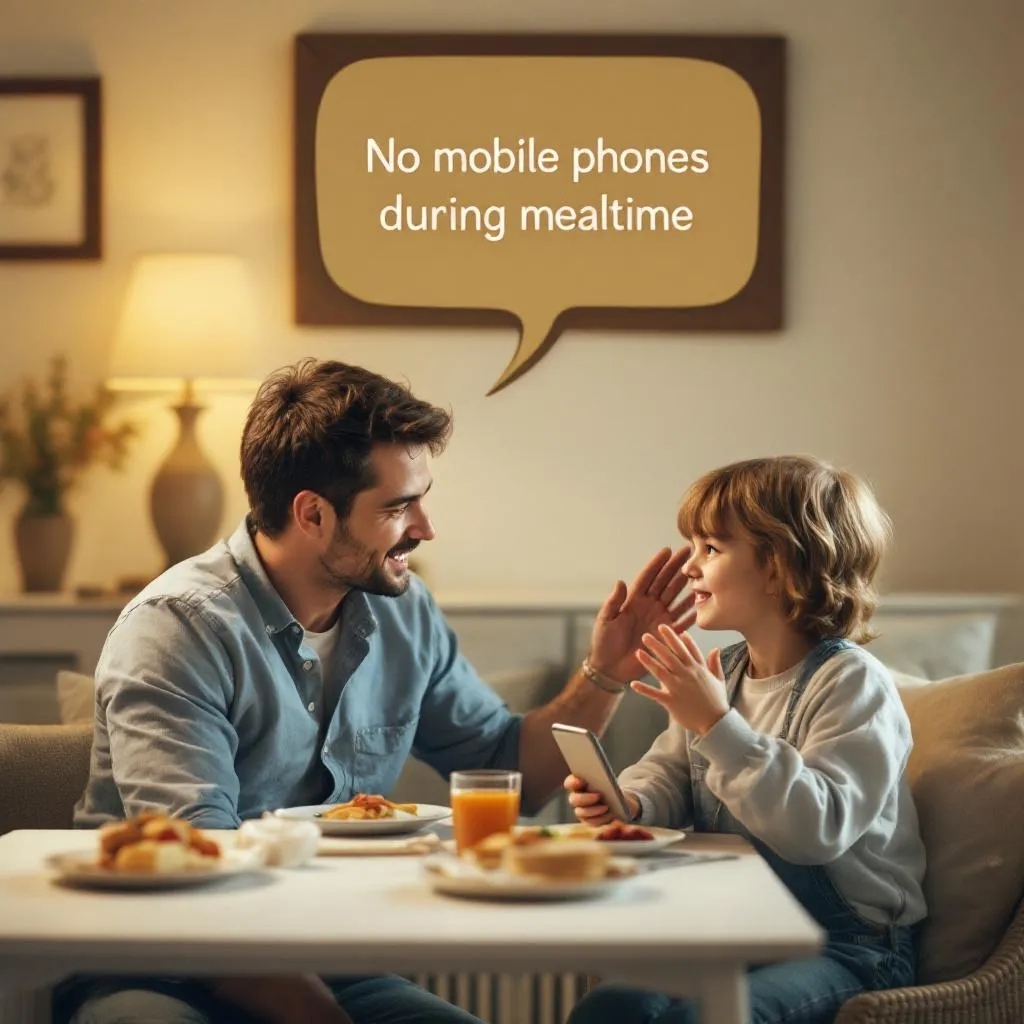
Parents play a big role in helping children manage mobile phone addiction and reduce smartphone addiction risks:
• Set clear rules about how much screen time is allowed each day.
• Encourage outdoor play and hobbies that don’t involve screens to prevent digital addiction.
• Spend quality time together without phones — this sets a good example and helps kids avoid becoming smartphone zombies.
• Use parental control apps to block inappropriate content or limit use.
• Talk openly about the risks of too much phone use and why balance is important to protect children from phone addiction effects.
Benefits of Reducing Mobile Addiction
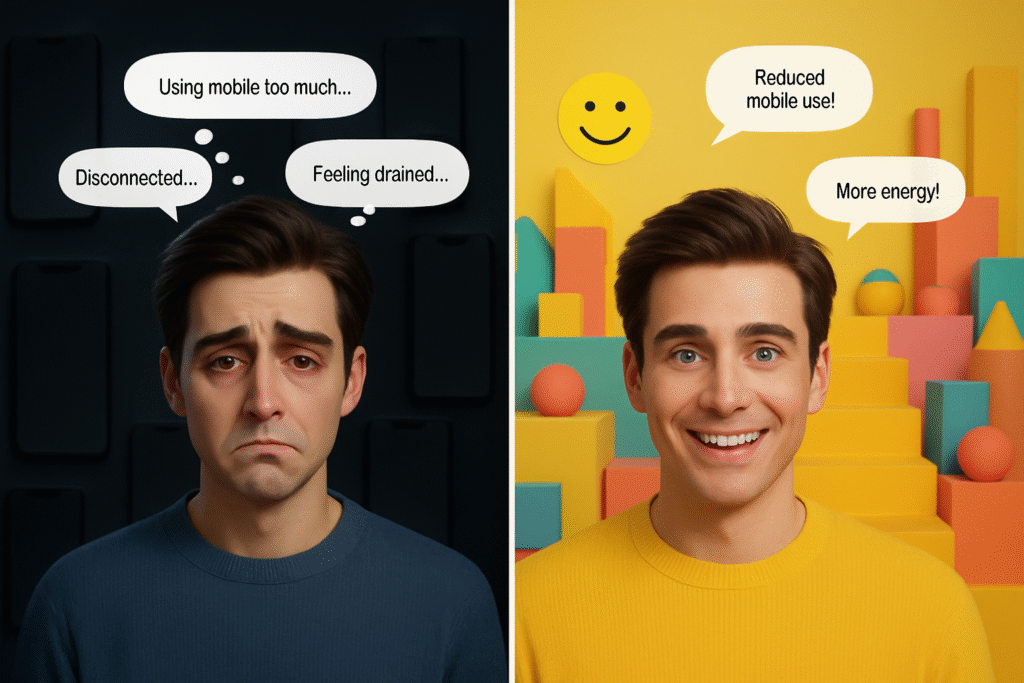
When you control your phone use and reduce smartphone addiction, you may notice many positive changes:
• You get better sleep and feel more energetic, improving your overall health and reducing negative phone addiction effects.
• You can focus better at school or work, overcoming distractions caused by digital addiction.
• Your relationships with family and friends improve as you spend less time as a smartphone zombie and more time connecting in real life.
• You feel less stressed and anxious.
• You have more time to do things you enjoy and explore new hobbies, helping you break free from mobile phone addiction.
• You spend more quality time with people around you.
• You feel happier because you are not always distracted by your phone.
• You improve your physical health by moving more and resting your eyes from excessive screen time.
• You make fewer mistakes because you are more focused.
• You become more aware of your surroundings and stay safer.
• You save money by avoiding unnecessary phone apps or data use.
• You learn to enjoy quiet moments without needing your phone.
• You improve your memory by paying more attention to real-life events.
• You build better habits that help your mental health and reduce risks of mobile addiction.
• You feel more confident when you control your phone use.
WARNING: How Phones Are Stealing Our Lives — 20 Shocking Truths You Need to Know!

📵 A wake-up call for everyone — see how mobile addiction and smartphone addiction are quietly replacing love, memories, and real human connection.
1. Love and Communication
Before Mobile: People hugged each other, shared real smiles, and had face-to-face talks that made them feel loved and understood.
After Mobile: People now send heart emojis and short texts. The warmth of real connection is disappearing behind cold screens, showing the emotional toll of phone addiction effects.
2. Outdoor Fun and Play
Before Mobile: Kids played outside, ran under the sun, and made real memories with friends.
After Mobile: Kids now stay indoors playing mobile games, losing touch with real fun, fresh air, and friendships — a clear sign of mobile phone addiction.
3. Brain Power and Curiosity
Before Mobile: People used their brains to solve problems, remember things, and learn through books or asking questions.
After Mobile: People now depend on mobile phones or AI tools for every answer, slowly reducing their thinking power, a consequence of growing digital addiction.
4. Family Time
Before Mobile: Families talked at the dinner table, laughed together, and shared their day with love.
After Mobile: Now, everyone looks at their phones, even during meals, forgetting to look at each other’s faces due to smartphone addiction.
5. Letters and Surprise Visits
Before Mobile: People wrote heartfelt letters or made surprise visits to show love and care — it felt special and unforgettable.
After Mobile: Now, people just send a quick message or emoji, and that deep, personal touch is slowly fading away.
6. School and Learning
Before Mobile: Students focused on books, teachers, and writing by hand.
After Mobile: Phones bring distractions, and many students scroll or chat during study time — a growing concern linked to mobile addiction.
7. Real Emotions
Before Mobile: People cried, laughed, and shared feelings in person, with real care and support.
After Mobile: Feelings are shown through emojis or status updates, and many suffer silently behind screens, hidden effects of phone addiction.
8. Sleep and Rest
Before Mobile: People slept early and peacefully, waking up fresh and healthy.
After Mobile: People stay up late scrolling endlessly, hurting their sleep and health — a classic phone addiction effect.
9. Eye Contact and Attention
Before Mobile: People looked into each other’s eyes while talking and listened with full heart.
After Mobile: Eyes stay on screens even when someone is speaking right next to them, showing how smartphone addiction affects attention.
10. Waiting and Patience
Before Mobile: People waited calmly and handled delays without stress or anger.
After Mobile: Mobile phones provide everything fast, so small delays make people angry and impatient — another side of digital addiction.
11. Walking and Looking Around
Before Mobile: People walked freely, observing trees, skies, and people around them.
After Mobile: Heads down, eyes on phones — some bump into walls or miss moments around them — typical of a smartphone zombie.
12. Mindfulness and Peace
Before Mobile: People enjoyed silence, nature, and their own thoughts peacefully.
After Mobile: Constant notifications and noise steal peace and quiet, a sign of increasing mobile phone addiction.
13. Creativity and Imagination
Before Mobile: Kids created stories, drew pictures, and played pretend games using imagination.
After Mobile: Phones do everything — kids just swipe, leaving their creativity unused due to digital addiction.
14. Memory Power
Before Mobile: People remembered phone numbers, directions, and little details.
After Mobile: People forget simple things because phones do the remembering for them.
15. Giving Full Attention
Before Mobile: People gave full attention to each other while talking or listening.
After Mobile: People listen with one ear while scrolling on their phones, making others feel ignored.
16. Helping Strangers
Before Mobile: People noticed if someone needed help and offered a hand.
After Mobile: Most are too busy on phones to even look around or care.
17. Travel and Experience
Before Mobile: People enjoyed the moment, looked out of windows, and talked during trips.
After Mobile: People just click photos or videos for social media and forget to enjoy the real scene.
18. Respecting Time
Before Mobile: People arrived on time and respected others’ time.
After Mobile: People get late because they get lost in games, videos, or endless scrolling.
19. Health and Fitness
Before Mobile: People moved more, played outside, and stayed active.
After Mobile: Long screen time makes people lazy, weak, and less healthy — classic phone addiction effects.
20. Talking with Elders
Before Mobile: People sat with grandparents and listened to stories or life lessons.
After Mobile: Phones have replaced those golden talks, leaving elders feeling lonely.
🔚 In Short:
Mobile phones were made to help people — but slowly, they’re taking away the things that make life truly beautiful: real talks, hugs, fresh air, creativity, family time, and peace of mind. It’s time to use technology wisely — not blindly — and break free from mobile addiction.
Final Thoughts
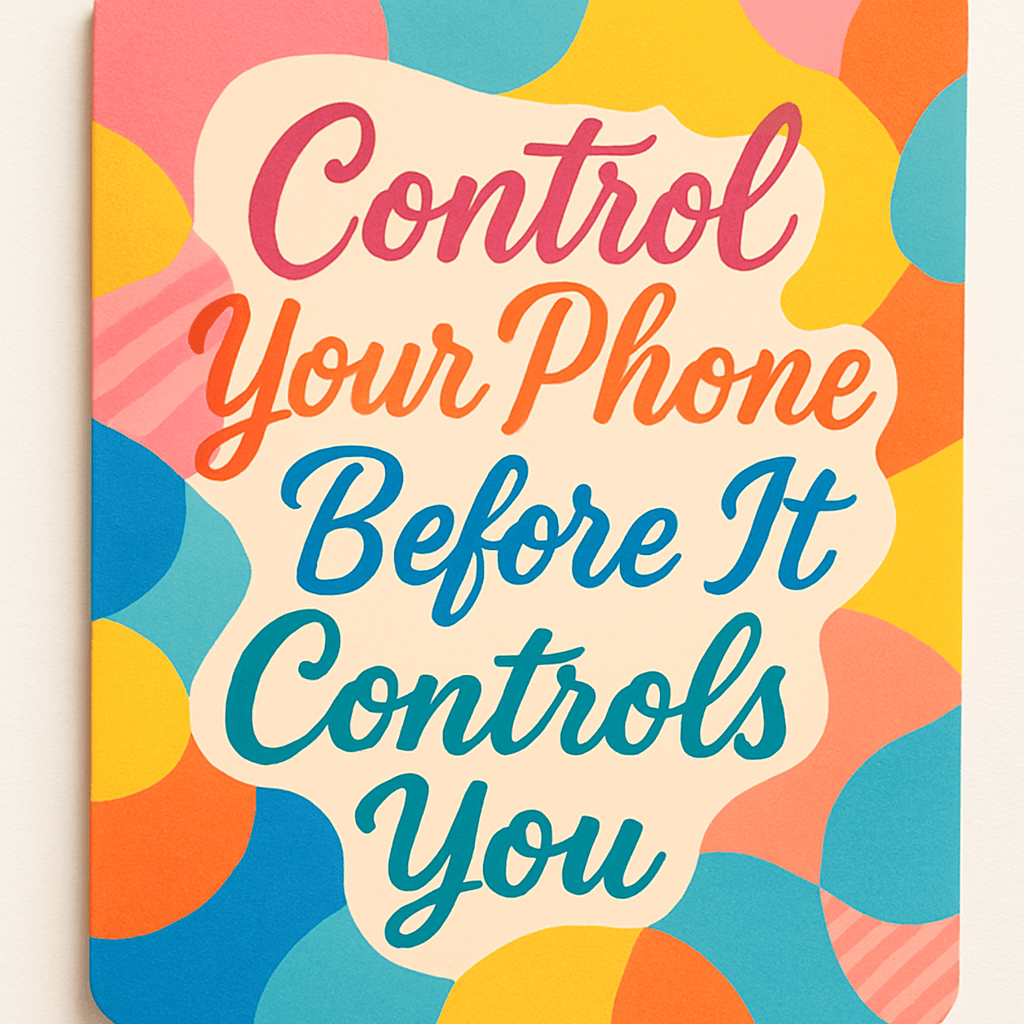
Phones are amazing tools that help us learn new things, stay in touch with friends and family, and enjoy fun activities like watching videos or playing games. They make life easier and more exciting in many ways. But when we use our phones too much, it can cause big problems for people of all ages — kids, teens, and even adults — a growing concern known as mobile addiction or smartphone addiction.
Spending too much time on your phone can make you feel tired, distracted, lonely, or even unhappy without you realizing it. It can hurt your school or work performance, make you miss out on fun with friends and family, and negatively affect your health. Sometimes, people don’t notice how much time they spend on their phones until it starts to cause serious trouble — classic phone addiction effects.
If you or someone you know is always looking at their phone and it’s causing problems — like feeling upset when not using it, losing sleep, or ignoring important things — it’s very important to take action. The good news is that even small changes can help a lot. Simple steps like setting a daily time limit for phone use, turning off unnecessary notifications, or spending more time doing things without a phone — like playing outside, reading, or talking face-to-face — can make a big difference in overcoming digital addiction.
Remember, you don’t need to stop using your phone completely. Phones are helpful and fun! But it’s important to use them in a balanced way. When you use your phone wisely, you can stay connected with others and still enjoy a happy, healthy life without it.
Don’t let your phone take control of you. Start making small changes today to protect your time, health, and happiness for a better future — and break free from the grip of smartphone addiction.
Frequently Asked Questions (FAQs)
What is smartphone addiction?
Smartphone addiction is a behavioral condition where a person becomes overly dependent on their mobile device, leading to negative impacts on daily life, relationships, and mental health.
How is smartphone addiction similar to drug addiction?
Like drug addiction, smartphone addiction can trigger dopamine release in the brain’s reward system, causing cravings, withdrawal symptoms, and compulsive usage despite harmful consequences.
What are common signs of smartphone addiction?
Signs include constant checking of the phone, anxiety when without it, neglecting responsibilities, sleep disturbances, and inability to reduce screen time.
Who is most at risk of developing smartphone addiction?
Young people, especially teenagers and young adults, are at higher risk due to increased social media use, gaming, and less developed self-regulation skills.
How does smartphone addiction affect mental health?
It can contribute to anxiety, depression, poor sleep quality, decreased attention span, and reduced face-to-face social interaction.
Can smartphone addiction be treated?
Yes. Treatment includes behavioral therapy, setting screen time limits, digital detoxes, and cultivating offline hobbies and social connections.
How can I reduce my smartphone usage effectively?
Strategies include turning off non-essential notifications, scheduling phone-free periods, using apps to monitor screen time, and replacing phone use with other activities.
Is smartphone addiction officially recognized as a disorder?
While not yet classified as a formal disorder by the DSM-5, many health experts acknowledge it as a serious behavioral addiction needing awareness and management.
💫 Control your phone before it controls you,
SAAH (Hiba) — Student ✨ Content Writer
📱 Because awareness is the first step to freedom from addiction.

